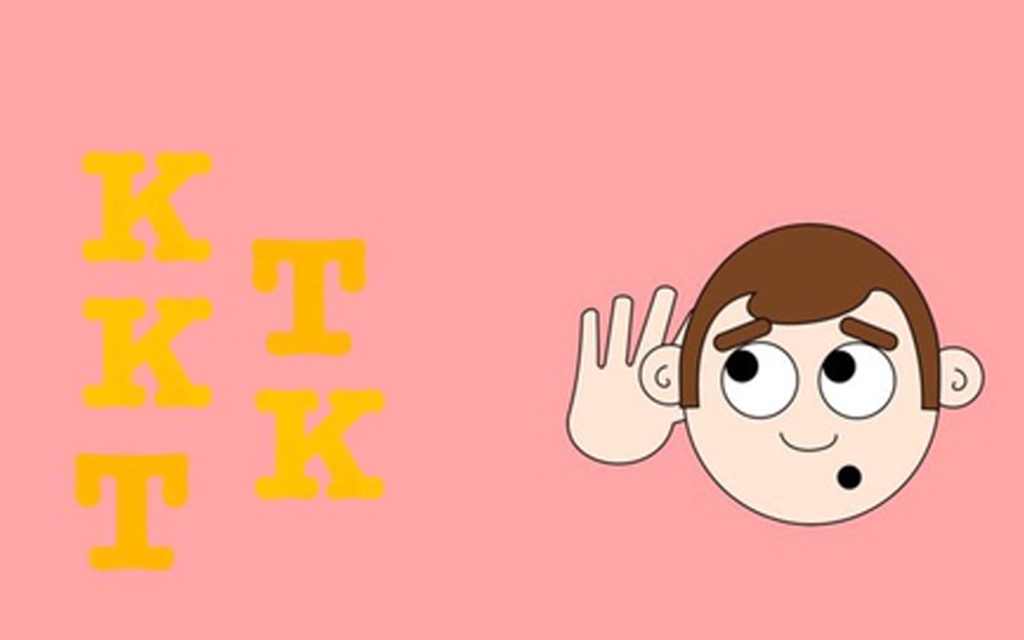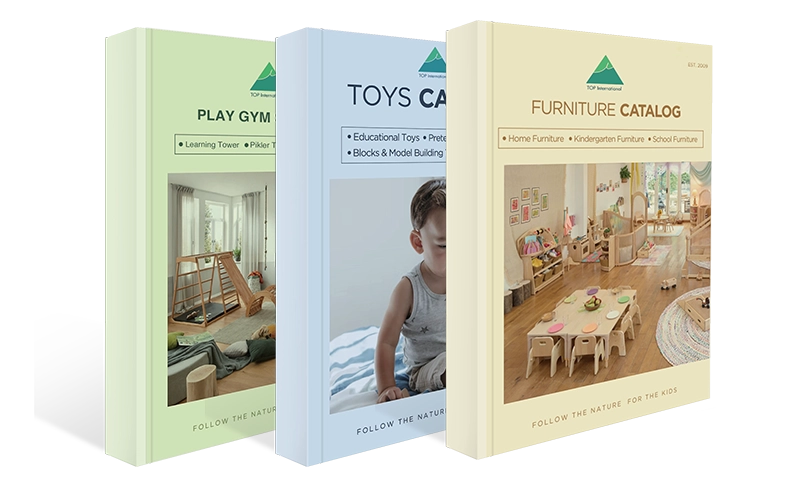Is your child struggling to tell the difference between similar sounds like “b” and “d” or “ch” and “sh”? Do they often misunderstand spoken instructions, even in quiet environments? Are you concerned that poor Auditory Discrimination may delay their reading or speaking abilities and hurt their classroom performance?
Auditory Discrimination is a foundational listening skill that allows children to recognize and differentiate between sounds in language. Enhancing this ability not only strengthens speech clarity but also improves reading comprehension, memory, and attention span. With strong auditory processing, children follow directions better, express themselves more clearly, and adapt more confidently in learning environments.
There are proven, practical ways to strengthen a child’s Auditory Discrimination—many of which can be done at home or in the classroom. Let’s explore them together.

การแยกแยะเสียงคืออะไร?
การแยกแยะเสียงหมายถึงความสามารถของสมองในการจดจำและแยกแยะความแตกต่างระหว่างเสียงที่แตกต่างกัน ซึ่งรวมถึงการสังเกตเห็นความแตกต่างเล็กน้อยระหว่างหน่วยเสียง (หน่วยเสียงที่เล็กที่สุดในการพูด) เช่น การแยกแยะระหว่างเสียงของ “b” กับ “p” หรือ “f” กับ “v” ตัวอย่างเช่น หากเด็กไม่สามารถแยกแยะความแตกต่างระหว่าง “cat” กับ “cap” ได้ พวกเขาอาจประสบปัญหาในการสะกดคำ การอ่านทำความเข้าใจ หรือการสื่อสารด้วยวาจา
วิทยาศาสตร์เบื้องหลังการแยกแยะเสียง
จากมุมมองทางประสาทวิทยา การแยกแยะเสียงเกี่ยวข้องกับคอร์เทกซ์การได้ยินและศูนย์ภาษาของสมอง เมื่อเด็กได้ยินเสียง สมองจะต้องประมวลผลและกำหนดความหมายอย่างรวดเร็ว หากกระบวนการนี้ไม่มีประสิทธิภาพหรือพัฒนาไม่เต็มที่ เด็กอาจฟังได้อย่างถูกต้องแต่ไม่เข้าใจหรือตอบสนองได้ไม่ถูกต้อง ไม่ใช่เรื่องของการสูญเสียการได้ยิน แต่เป็นเรื่องของความสามารถของสมองในการตีความสิ่งที่ได้ยิน
Auditory discrimination is part of the more prominent family of auditory processing skills, which also includes:
- ความจำด้านการได้ยิน – ความสามารถในการจดจำสิ่งที่คุณได้ยิน
- การแยกแยะเสียงจากรูปและพื้น – ความสามารถในการโฟกัสเฉพาะเสียงในสภาพแวดล้อมที่มีเสียงดัง
- การเรียงลำดับเสียง – การรู้จักลำดับของเสียงหรือคำ

สัญญาณของทักษะการแยกแยะเสียงที่อ่อนแอ
เด็กที่มีทักษะการแยกแยะเสียงที่ไม่ดีอาจแสดงอาการดังต่อไปนี้:
- ความยากลำบากในการปฏิบัติตามคำสั่งหลายขั้นตอน
- คำที่ฟังดูคล้ายกันจนน่าสับสน
- พัฒนาการการพูดที่ล่าช้า
- การออกเสียงคำทั่วไปไม่ถูกต้อง
- มีปัญหาในการเรียนรู้เสียงตัวอักษรหรือการอ่านออกเสียง
ความท้าทายเหล่านี้มักทำให้เกิดความหงุดหงิดในโรงเรียน โดยเฉพาะอย่างยิ่งในช่วงเริ่มต้นการเรียนรู้ด้านการอ่านเขียน ข่าวดีก็คือการสนับสนุนที่เหมาะสมสามารถพัฒนาทักษะเหล่านี้ได้อย่างมาก
ความสำคัญของการแยกแยะเสียง
การแยกแยะเสียงเป็นสิ่งสำคัญสำหรับการพัฒนาการพูดที่ชัดเจน ความเข้าใจภาษาที่ดี และผลสัมฤทธิ์ทางการเรียนที่ดี ช่วยให้เด็กๆ สามารถแยกแยะเสียงที่คล้ายคลึงกัน ปฏิบัติตามคำแนะนำ และอ่านหนังสือได้อย่างคล่องแคล่ว
มีผลกระทบต่อภาษาและการรู้หนังสืออย่างไร
การรับรู้หน่วยเสียง—ความสามารถในการได้ยินและควบคุมเสียงในคำ—มีความเกี่ยวข้องโดยตรงกับการแยกแยะเสียง หากไม่มีสิ่งนี้ เด็กอาจประสบปัญหาในการ:
- เรียนรู้การอ่านออกเสียง
- เข้าใจคำคล้องจองหรือพยางค์
- สะกดคำได้ถูกต้อง
- ตรวจจับข้อผิดพลาดในภาษาพูดหรือภาษาเขียน
การแยกแยะเสียงที่ไม่ดีอาจส่งผลต่อการเรียนรู้คำศัพท์ หากเด็กไม่สามารถแยกแยะระหว่างคำต่างๆ เช่น “เรือ” และ “แกะ” พวกเขาอาจเข้าใจผิดเกี่ยวกับสิ่งที่กำลังสอนหรือสื่อสาร
ผลกระทบทางสังคม
นอกจากอุปสรรคทางวิชาการแล้ว เด็กที่มีทักษะการแยกแยะเสียงที่อ่อนแออาจรู้สึกโดดเดี่ยว พวกเขาอาจ:
- หลีกเลี่ยงการสนทนาแบบกลุ่ม
- ตีความเรื่องตลกหรือเสียดสีไม่ถูกต้อง
- รู้สึกหงุดหงิดหรือถอนตัว
- พัฒนาปัญหาพฤติกรรมจากความสับสนหรือความกดดัน
สุขภาพทางสังคมและอารมณ์มีความเกี่ยวข้องอย่างใกล้ชิดกับการสื่อสาร การส่งเสริมการแยกแยะเสียงไม่เพียงแต่ช่วยในห้องเรียนเท่านั้น แต่ยังช่วยเสริมสร้างมิตรภาพ ความมั่นใจ และปฏิสัมพันธ์ในครอบครัวอีกด้วย
ประโยชน์ของการเสริมสร้างความสามารถในการแยกแยะเสียง
ความจำและทักษะสมาธิที่แข็งแกร่งขึ้น
ปรับปรุงความคล่องแคล่วในการอ่านและความเข้าใจ
การผลิตคำพูดที่ชัดเจนยิ่งขึ้น
ผลการเรียนที่ดีขึ้น
เพิ่มความมั่นใจในสถานการณ์ทางสังคม

Signs Your Child May Have Weak Auditory Discrimination
As a parent or kindergarten educator, it’s essential to recognize the early signs of weak auditory discrimination, especially during the critical language development years between ages 2 and 6. This auditory skill is what allows children to differentiate between sounds, syllables, and phonemes (the smallest units of sound in language). When this ability is underdeveloped, it can lead to a range of challenges, from speech delays to learning difficulties in reading and comprehension.
One of the most common signs is confusion between similar-sounding words or letters. For example, a child may mix up “bat” and “pat” or hear “cat” when someone says “cap.” These errors aren’t just cute mispronunciations—they are indicators that the child’s brain is not processing auditory information.
Another red flag is difficulty following verbal instructions, especially in group environments like the classroom. If a child frequently asks for repetition or seems to misunderstand tasks that were clearly explained, this could signal a processing gap. It’s not about intelligence—it’s about how their brain decodes what they hear.
You may also notice delayed speech development. Children with auditory discrimination issues often struggle to reproduce sounds correctly because they don’t hear the differences clearly in the first place. As a result, they may avoid speaking or develop unusual speech patterns that persist longer than expected.
Other behavioral signs include frequent daydreaming, inattentiveness during storytime, or poor participation in phonics activities. These kids may seem distracted, but the root issue may be auditory, not visual or behavioral.
If you recognize several of these signs in your child or student, it’s worth taking proactive steps. Weak auditory discrimination is a developmental delay, not a permanent disability, and with targeted support, many children can catch up quickly.
Key Benefits of Strengthening Auditory Discrimination
Strengthening a child’s auditory discrimination is one of the most impactful steps we can take to support their early learning and long-term academic success. While it may seem like a small skill—simply telling sounds apart—it plays a foundational role in language, communication, and literacy.
One of the most direct benefits is clearer speech development. When children can accurately hear differences between sounds like /b/ and /d/ or /ch/ and /sh/, they can replicate those sounds more confidently when speaking. This leads to better pronunciation, fewer speech errors, and greater self-assurance when expressing oneself.
Another critical benefit is reading readiness. Auditory discrimination is the gateway to phonemic awareness—the ability to recognize and manipulate the sounds that make up words. Without strong sound differentiation, children may struggle with phonics, which affects their ability to decode and understand words while reading. In other words, the path to strong reading starts with strong listening.
Improved listening and comprehension are also significant benefits. Children with refined auditory discrimination are more capable of following multi-step instructions, understanding classroom discussions, and processing new vocabulary. This makes them more confident participants in group settings and less reliant on repeated explanations.
There are even social-emotional benefits. A child who understands spoken language is less likely to feel frustrated or left out. They can engage more effectively in conversations, pick up on tone and emotion, and develop stronger peer relationships. Better communication reduces anxiety and builds confidence in both academic and social environments.
From a long-term perspective, auditory discrimination is also linked to better memory, attention, and problem-solving. These cognitive skills all rely on the brain’s ability to organize, store, and retrieve verbal information efficiently. Strengthening auditory skills lays a neurological foundation that supports all future learning.
In short, investing in a child’s auditory discrimination is like giving them the tools to unlock language, learning, and confidence. Whether at home or in the classroom, it’s a skill worth nurturing every single day.

Proven Strategies to Enhance Auditory Discrimination at Home
When it comes to nurturing a child’s auditory discrimination abilities, the home environment plays a decisive role. As a parent or caregiver, you don’t need advanced degrees in early childhood education to make a meaningful difference—you need consistency, intention, and the correct set of activities that stimulate sound awareness. In this section, we’ll explore the most effective home-based strategies to develop and strengthen auditory skills, combining educational insights with Montessori and Reggio-inspired methods.
Games and Activities for Daily Practice
Children learn best through play, especially when the activities are embedded into daily routines. One of the most accessible and impactful ways to sharpen auditory discrimination is through:
Listening games
These can be as simple as “Sound Hunt,” where the child closes their eyes and guesses familiar household sounds (a closing drawer, a spoon tapping a cup, footsteps), to more structured exercises like “I Hear With My Little Ear.”
Rhyming games
They are especially effective, as they help children pick up on the subtle differences and similarities in sound endings. You can ask questions like “What rhymes with ‘cat’?” and then explore all the possibilities. The point here is not perfection but repetition—repeating sound patterns helps the brain organize and distinguish them more accurately.
Clapping syllables
Another fun way to build auditory awareness. Choose simple words and have the child clap out each syllable (“apple” = two claps, “banana” = three). This not only improves auditory segmentation but also prepares them for decoding words in reading.
Daily conversations also offer opportunities. Ask your child to repeat sentences you say, or play “telephone” to see how well they’re catching sound details. These games may feel like play, but neurologically, they are training sessions for the brain.
กิจกรรมการแยกแยะเสียงสำหรับเด็กก่อนวัยเรียน
Children between the ages of 3 and 5 are in a sensitive developmental window where their brains are especially receptive to auditory learning. The groundwork for language, listening, and phonemic processing is laid during this time. Failing to nurture auditory discrimination skills at this stage can result in long-term academic delays and speech issues. However, children can build the foundational skills necessary for successful reading and communication with early intervention and daily reinforcement.
Auditory discrimination is not just about hearing clearly—it’s about the brain’s ability to process, analyze, and interpret subtle sound differences. This includes differentiating between similar sounds like “p” and “b,” distinguishing one voice in a noisy classroom, or recognizing rhyming patterns in words. These tasks may sound simple to adults, but require complex cognitive coordination for young children.
เด็กก่อนวัยเรียนจะได้รับประโยชน์สูงสุดเมื่อทักษะการฟังได้รับการสอนผ่านการเล่น การเรียนรู้ภาษาแบบโต้ตอบ ดนตรี และการเล่านิทาน บทเรียนอย่างเป็นทางการมักจะไม่สามารถดึงดูดความสนใจของเด็กได้ แต่กิจกรรมที่ใช้จินตนาการและสัมผัสหลายอย่างสามารถนำไปสู่การพัฒนาที่มากมายมหาศาล ด้านล่างนี้ เราจะสำรวจองค์ประกอบที่สำคัญที่สุดสองประการของพื้นที่พัฒนาการนี้ ได้แก่ ทักษะต่างๆ และวิธีการพัฒนาทักษะเหล่านี้ผ่านกิจกรรมที่มีจุดมุ่งหมาย
ทักษะการแยกแยะเสียง
การทำความเข้าใจองค์ประกอบของการประมวลผลเสียงเป็นขั้นตอนแรกในการเสริมสร้างความแข็งแกร่งให้กับการประมวลผลเสียง ต่อไปนี้คือองค์ประกอบที่สำคัญที่สุดสามประการภายในกรอบการแยกแยะเสียง:
ความตระหนักทางสัทศาสตร์
ความตระหนักรู้ทางสัทศาสตร์หมายถึงความสามารถในการจดจำและจัดการโครงสร้างเสียงของภาษา เป็นคำรวมที่รวมถึงการสัมผัส การแยกคำพยางค์ และการจดจำรูปแบบคำ เด็กก่อนวัยเรียนที่ขาดความตระหนักรู้ทางสัทศาสตร์อาจประสบปัญหาในภายหลังในการถอดรหัสคำ การสะกดคำ และความเข้าใจในการอ่าน
ทักษะนี้จะช่วยให้เด็กๆ สามารถ:
- Break down words into syllables (e.g., “elephant” has three syllables)
- ระบุว่าคำใดสัมผัสหรือเริ่มด้วยเสียงเดียวกัน
- ผสมหน่วยเสียงหลายหน่วยเข้าด้วยกันเพื่อสร้างคำ
การพัฒนาความตระหนักรู้ทางสัทศาสตร์หมายถึงการช่วยให้เด็กๆ มี "ความตระหนักรู้ในเสียง" ซึ่งก็คือการทำความเข้าใจว่าคำต่างๆ มีเสียงอย่างไร มีโครงสร้างอย่างไร และจะปรับเปลี่ยนโครงสร้างเหล่านั้นอย่างไรเพื่อสร้างความหมายใหม่ๆ เมื่อทำผ่านการปรบมือเป็นจังหวะ การร้องเพลง หรือเกมคล้องจองที่สนุกสนาน การเรียนรู้ผ่านการฟังอย่างลึกซึ้งจะกลายเป็นสิ่งที่เป็นธรรมชาติและสนุกสนาน
การรับรู้หน่วยเสียง
การรับรู้หน่วยเสียงเป็นกลุ่มย่อยของการรับรู้ทางสัทศาสตร์ ซึ่งมีความละเอียดอ่อนกว่ามาก โดยหมายถึงความสามารถในการได้ยินและปรับเปลี่ยนเสียงแต่ละเสียงหรือหน่วยเสียงในคำ นี่อาจเป็นทักษะที่สำคัญที่สุดที่เกี่ยวข้องกับความสำเร็จในการอ่านในอนาคต เด็กที่สามารถแยกแยะและปรับเปลี่ยนหน่วยเสียงได้มีแนวโน้มที่จะกลายเป็นนักอ่านและสะกดคำที่มีความมั่นใจมากกว่า
เด็กก่อนวัยเรียนที่มีความตระหนักรู้หน่วยเสียงที่ดีสามารถ:
- ระบุเสียงแรกหรือเสียงสุดท้ายในคำ ("ดวงอาทิตย์" ขึ้นต้นด้วยเสียงอะไร)
- ผสมหน่วยเสียงที่แยกกันเพื่อสร้างคำ ("/c/ /a/ /t/ makes... cat!")
- สลับหน่วยเสียงเพื่อสร้างคำใหม่ ("เปลี่ยน /m/ ใน 'mat' เป็น /s/ — คำใหม่คืออะไร")
การสร้างทักษะนี้ไม่จำเป็นต้องอาศัยคำศัพท์ขั้นสูง แต่ต้องใช้การฟังอย่างตั้งใจ การเรียนรู้ภาษาพูดอย่างสม่ำเสมอ และการใช้เสียงอย่างสนุกสนาน

การรับรู้เสียงพูดในเสียงรบกวน
This skill, also referred to as auditory figure-ground discrimination, is often overlooked but critical, especially in classrooms and group settings. It involves focusing on a single sound source or speaker amidst background noise. Preschoolers who struggle with this may appear distracted or inattentive in noisy environments.
การพัฒนาทักษะการรับรู้คำพูดในเสียงรบกวนช่วยให้เด็กๆ สามารถ:
- ปฏิบัติตามคำสั่งของครูแม้ว่าเพื่อนร่วมชั้นจะคุยกัน
- ฟังผู้ปกครองอ่านหนังสือในขณะที่ทีวีเปิดอยู่
- เน้นการสนทนาในช่วงที่มีงานยุ่งและมีเสียงดัง
การเสริมสร้างทักษะนี้ให้กับเด็กหลายๆ คน โดยเฉพาะเด็กที่มีปัญหาด้านสมาธิสั้นหรือมีปัญหาด้านการแยกแยะเสียงในระดับเล็กน้อย จำเป็นต้องฝึกฝนในสภาพแวดล้อมที่ควบคุมได้ ซึ่งจะค่อยๆ เพิ่มตัวแปรด้านเสียงเข้ามา เมื่อเวลาผ่านไป ทักษะนี้จะช่วยให้เด็กสามารถจดจ่อกับข้อมูลเสียงที่เกี่ยวข้องได้ดีขึ้น
แม้ว่าทักษะต่างๆ จะเป็นพื้นฐาน แต่หนทางที่ดีที่สุดในการฝึกการแยกแยะเสียงในเด็กก่อนวัยเรียนก็คือการทำกิจกรรมที่มีส่วนร่วมและมีการโต้ตอบกัน กิจกรรมต่อไปนี้จะเน้นไปที่พื้นที่เฉพาะของการรับรู้เสียงและการแยกแยะเสียง และสามารถนำไปใช้ที่บ้านหรือในห้องเรียนได้อย่างง่ายดาย
การได้ยินเพิ่มขึ้น
พาเด็กก่อนวัยเรียนของคุณออกไปข้างนอกเพื่อ "เดินฟัง" ซึ่งเป็นการเดินช้าๆ ที่เงียบสงบ โดยเน้นที่การฟังเป็นหลัก ขอให้พวกเขาชี้เสียงต่างๆ ที่พวกเขาได้ยิน เช่น เสียงนกร้อง เสียงสุนัขเห่า เสียงใบไม้เสียดสี เสียงรถวิ่งผ่าน
เพื่อให้มีส่วนร่วมมากขึ้น:
- ใช้รายการตรวจสอบการล่าขุมทรัพย์เสียงที่สามารถพิมพ์ได้
- บันทึกเสียงบนโทรศัพท์และเล่นซ้ำในภายหลังเพื่อเล่นเกมจับคู่
- ใช้คำถาม เช่น “เสียงนั้นอยู่ใกล้หรือไกล ดังหรือเบา”
กิจกรรมนี้จะช่วยเสริมสร้างความสนใจในการฟังและการแยกแยะเสียงจากสภาพแวดล้อม ซึ่งเป็นจุดเริ่มต้นของการฟังอย่างมีสมาธิในห้องเรียน
การระบุเครื่องมือ
ให้เด็กๆ ได้สัมผัสกับเครื่องดนตรีต่างๆ ไม่ว่าจะเป็นเครื่องดนตรีจริงหรือเครื่องดนตรีดิจิทัล เล่นเครื่องดนตรีแต่ละชิ้นและขอให้เด็กๆ ตั้งชื่อให้เครื่องดนตรีนั้นๆ จากนั้นเล่นเสียงจากด้านหลังของคุณแล้วขอให้เด็กๆ ระบุชื่อเครื่องดนตรีนั้นๆ
เกมนี้จะช่วยให้เด็กก่อนวัยเรียนเรียนรู้:
- ความแตกต่างของโทนสี
- การระบุแหล่งกำเนิดเสียง
- ความจำเสียงโดยการทำซ้ำ
นอกจากนี้ยังเป็นประตูสู่การฝึกจังหวะโดยธรรมชาติ ซึ่งมีความเชื่อมโยงอย่างมากกับการเรียนรู้ภาษาและการบำบัดการแยกแยะเสียงในเด็กที่มีปัญหาด้านการประมวลผล
ชื่อสัตว์
เกมภาษาแสนสนุกนี้จะช่วยกระตุ้นให้เกิดการรับรู้เสียงและการแก้ไขหน่วยเสียง พูดชื่อสัตว์ผิดโดยตั้งใจ ตัวอย่างเช่น พูดว่า “log” แทนที่จะพูดว่า “dog” แล้วถามว่า “เดี๋ยวนะ ฉันพูดถูกไหม”
ส่งเสริมให้เด็กๆ:
- แก้ไขคุณโดยแยกหน่วยเสียงที่ไม่ถูกต้อง
- ทวนคำที่ถูกต้อง
- สร้างเวอร์ชันที่แปลกๆ และค้นหาข้อผิดพลาด
This reinforces phonemic precision and critical listening, both essential for literacy.
แฟลชการ์ดคำศัพท์ที่มีสัมผัส
ใช้แฟลชการ์ดพร้อมภาพประกอบที่มีวัตถุที่คล้องจอง เช่น แมว หมวก ค้างคาว หนู พูดคำหนึ่งออกมาดังๆ และขอให้ลูกของคุณเลือกการ์ดที่คล้องจองจากชุดการ์ด
เพิ่มความยากโดย:
- ให้พวกเขาได้สัมผัสโดยไม่ต้องมีสัญลักษณ์ภาพ
- ให้พวกเขาสร้างบทกลอนของตนเอง
- การแต่งกลอนไร้สาระและระบุว่าอันไหนเป็นเรื่องจริง
สิ่งนี้สนับสนุนทักษะการอ่านเบื้องต้น เป้าหมายการแยกแยะเสียง และการพัฒนาความตระหนักทางสัทศาสตร์

ทายสิว่าใคร
บันทึกเสียงสมาชิกในครอบครัวหรือครูที่พูดประโยคหนึ่งและเล่นซ้ำแบบสุ่ม ขอให้บุตรหลานของคุณระบุว่าใครกำลังพูดโดยพิจารณาจากน้ำเสียง ระดับเสียง และสำเนียง
สิ่งนี้จะช่วยส่งเสริม:
- การจดจำรูปแบบเสียง
- ความจำทางการได้ยินและการอนุมาน
- การฟังในสภาพแวดล้อมที่มีเสียงดัง
เกมนี้ช่วยเสริมสร้างความมั่นใจในการฟังในโลกแห่งความเป็นจริง ซึ่งมีประโยชน์อย่างยิ่งสำหรับเด็กๆ ที่ต้องการการบำบัดการพูดและการแยกแยะเสียง
หุ่นกระบอกจู้จี้
สร้างหุ่นกระบอกโง่ๆ ที่ “ไม่เก่งเรื่องการฟัง” หุ่นกระบอกจะออกเสียงคำผิดอยู่ตลอด เช่น “I love that!” (แปลว่า “แมว”)
หน้าที่ของลูกของคุณคือ:
- แก้ไขหุ่นกระบอก
- ทวนคำที่ถูกต้อง
- เน้นย้ำหน่วยเสียงเป้าหมาย
เกมนี้ช่วยส่งเสริมการตรวจสอบความแม่นยำของเสียงด้วยตนเอง และสร้างความมั่นใจในการแก้ไขข้อผิดพลาดทางการได้ยิน
เชื่อมต่อเสียง
ใช้คู่คำที่มีเสียงคล้ายกัน เช่น “fan” เทียบกับ “van” “sheep” เทียบกับ “ship” พูดคำเหล่านี้ออกมาดังๆ และถามว่าคำเหล่านี้เหมือนหรือแตกต่างกัน
เพิ่มความท้าทายโดย:
- เพิ่มความซับซ้อนของคำศัพท์
- การผสมคำที่ไร้สาระ
- การเพิ่มดนตรีประกอบเพื่อเบี่ยงเบนความสนใจ
นี้ โฟแบบฝึกหัดการแยกแยะเสียงแบบไม่ระบุสัญชาติช่วยเตรียมเด็กๆ ให้พร้อมสำหรับการฝึกอบรมและการประเมินการแยกแยะเสียงขั้นสูง
พัฒนาทักษะการรู้หนังสือเบื้องต้นของเด็กๆ ด้วยกิจกรรมการแยกแยะเสียง
รากฐานของการอ่านและการเขียนเริ่มต้นตั้งแต่ก่อนที่เด็กจะหยิบดินสอหรือเปิดหนังสือ โดยเริ่มจากการฟัง โดยเฉพาะความสามารถของสมองในการได้ยิน จดจำ และแยกแยะเสียงต่างๆ หรือที่เรียกว่าการแยกแยะเสียง หากไม่มีทักษะการแยกแยะเสียงที่ดี เด็กๆ จะมีแนวโน้มที่จะประสบปัญหาในการอ่านออกเสียง การถอดรหัส และการอ่านอย่างคล่องแคล่ว
การเน้นการเรียนรู้โดยใช้เสียงจะส่งผลดีอย่างมากในช่วงปีแรกๆ ซึ่งเป็นช่วงที่เด็กๆ จะเริ่มรับรู้ภาษาได้ดีที่สุด ช่วงเวลานี้เหมาะอย่างยิ่งสำหรับการแนะนำกิจกรรมการแยกแยะเสียง ซึ่งเป็นกิจกรรมที่สนุกสนาน มีส่วนร่วม และมีประสิทธิภาพสูงในการเสริมสร้างทักษะเบื้องต้นด้านการอ่านเขียน กิจกรรมเหล่านี้มุ่งเป้าไปที่ความสามารถทางปัญญาพื้นฐาน เช่น ความสนใจ ความจำ การเรียงลำดับ และการประมวลผลเสียง ซึ่งจะช่วยวางรากฐานสำหรับความสำเร็จในอนาคตในการอ่านและภาษา
เหตุใดการแยกแยะเสียงจึงมีความสำคัญต่อการเรียนรู้เบื้องต้น
เด็กๆ ต้องเรียนรู้ที่จะจดจำว่าเสียงนั้นแตกต่างกันอย่างไรเสียก่อนจึงจะสามารถระบุเสียงเหล่านั้นเป็นตัวอักษรหรือคำได้ ความสามารถนี้ส่งผลต่อวิธีการต่างๆ ดังต่อไปนี้
- ตรวจจับคำสัมผัสและพยางค์
- รู้จักเสียงเริ่มต้นและเสียงสิ้นสุด
- เชื่อมโยงเสียงของตัวอักษรกับสัญลักษณ์ที่เขียน
- ออกเสียงคำที่ไม่คุ้นเคยเมื่ออ่าน
ลองนึกถึงการแยกแยะเสียงเป็นขั้นตอน "การฝึกหู" ของการเรียนรู้ภาษา เช่นเดียวกับนักดนตรีที่ต้องแยกแยะระดับเสียงและโทนเสียง ผู้อ่านต้องแยกแยะระหว่าง /s/ กับ /sh/ หรือ /b/ กับ /d/ ความแตกต่างเหล่านี้อาจดูเล็กน้อยสำหรับผู้ใหญ่ แต่สำหรับผู้เรียนรุ่นเยาว์แล้ว ความแตกต่างเหล่านี้มีความสำคัญอย่างยิ่ง
โรงเรียนอนุบาลและโรงเรียนอนุบาลมีความสำคัญอย่างยิ่งในการแก้ไขปัญหาด้านการแยกแยะเสียง โดยเฉพาะอย่างยิ่งหากเด็กแสดงอาการล่าช้าหรือมีปัญหาในการปฏิบัติตามคำสั่งด้วยวาจา หากปัญหาเหล่านี้ไม่ได้รับการแก้ไข ปัญหาเหล่านี้อาจพัฒนาไปสู่ความผิดปกติในการอ่าน ความล่าช้าในการพูด และความท้าทายในห้องเรียน นี่คือสาเหตุที่การฝึกแยกแยะเสียงมักเป็นส่วนประกอบหลักของการแทรกแซงในระยะเริ่มต้นและการบำบัดการพูด

สัญญาณของทักษะการแยกแยะเสียงที่อ่อนแอในวัยเด็กตอนต้น
เด็ก ๆ ที่ต้องการการสนับสนุนเพิ่มเติมในพื้นที่นี้อาจ:
- Mix up similar-sounding words (“coat” vs “goat”)
- Struggle to hear the differences in rhymes
- Seems inattentive during verbal instructions
- มีความล่าช้าในการพูดหรือมีคำศัพท์จำกัด
- ไม่ผ่านการประเมินการแยกแยะเสียงหรือการทดสอบการแยกแยะเสียง
Parents and educators should not confuse these behaviors with laziness or a lack of interest. Often, it’s a case of an underdeveloped auditory system. The solution lies in consistent, targeted activities that reinforce sound recognition in various forms—from environmental noises to spoken language cues.
การส่งเสริมการรู้หนังสือเบื้องต้นผ่านการเรียนรู้เสียงผ่านการเล่น
เกมเสียงนั้นแตกต่างจากการท่องจำหรือการฝึกอ่านแบบบังคับตรงที่เป็นเกมที่ให้เด็กๆ ได้เรียนรู้อย่างเป็นธรรมชาติและสนุกสนาน เกมเสียงจะผสานเข้ากับชีวิตประจำวันได้อย่างเป็นธรรมชาติและทำให้การเรียนรู้รู้สึกเหมือนการเล่น กิจกรรมต่างๆ เช่น การระบุเสียงสัตว์ การปรบมือ และการแยกประเภทบัตรคำคล้องจอง จะช่วยสร้างสะพานเชื่อมระหว่างการได้ยินและความเข้าใจ
ยิ่งไปกว่านั้น แบบฝึกหัดเหล่านี้ยังช่วยเสริมการเชื่อมโยงระหว่างการรับรู้ทางเสียงและการแยกแยะและทักษะที่กว้างขึ้น เช่น:
- หน่วยความจำการทำงานเชิงวาจา
- ช่วงความสนใจ
- การแบ่งคำ
- การเรียงลำดับเรื่องราว
เมื่อสมองเรียนรู้ที่จะประมวลผลและจัดหมวดหมู่เสียงได้อย่างมีประสิทธิภาพมากขึ้น เด็กๆ ก็จะเก่งขึ้นในการตีความคำพูด มีส่วนร่วมในการสนทนา และในที่สุดก็สามารถจดจำภาษาที่พิมพ์ได้ การฝึกฝนทักษะเหล่านี้ตั้งแต่เนิ่นๆ จะช่วยลดโอกาสที่เด็กจะต้องเรียนการอ่านซ้ำในภายหลังในระดับประถมศึกษา
การรับรู้ทางสัทศาสตร์เทียบกับการรับรู้ทางหน่วยเสียง
การทำความเข้าใจความแตกต่างระหว่างสองคำนี้ถือเป็นสิ่งสำคัญสำหรับนักการศึกษาและผู้ปกครองที่กำลังฝึกอบรมการแยกแยะเสียง แม้ว่าคำทั้งสองคำนี้มักใช้แทนกันได้ แต่คำทั้งสองคำนี้มีจุดประสงค์ที่แตกต่างกันในการพัฒนาเด็ก
| คุณสมบัติ | ความตระหนักทางสัทศาสตร์ | การรับรู้หน่วยเสียง |
|---|---|---|
| คำนิยาม | ทักษะกว้างๆ รวมถึงการจดจำและการจัดการโครงสร้างเสียงในคำพูด | ทักษะที่แคบลงเน้นที่เสียงแต่ละเสียง (หน่วยเสียง) ในคำ |
| ตัวอย่างงาน | การระบุคำคล้องจอง การนับพยางค์ | การแยกเสียงแรกในคำว่า “dog” (/d/) |
| ความเกี่ยวข้อง | รากฐานสำหรับการแบ่งคำและการรับรู้สัมผัส | เชื่อมโยงโดยตรงกับการถอดรหัสและการสะกดคำ |
| กิจกรรม | เกมสัมผัส การปรบมือ การแบ่งประโยค | Sound blending, phoneme deletion, and sound substitution |
| การโฟกัสอายุ | เกิดขึ้นตั้งแต่ชั้นอนุบาลและเสริมสร้างความเข้มแข็งจนถึงชั้นอนุบาล | Emerges in late preschool, crucial in kindergarten, and first grade |
| Develop an early sound structure understanding | พัฒนาความเข้าใจโครงสร้างเสียงเบื้องต้น | ทำนายความสำเร็จในการออกเสียง การอ่าน และการสะกดคำ |
ทักษะทั้งสองอย่างมีความสำคัญ อย่างไรก็ตาม การรับรู้หน่วยเสียงเป็นขั้นตอนสุดท้ายก่อนที่เด็กๆ จะเริ่มเรียนการอ่านอย่างเป็นทางการ หากขาดสิ่งนี้ แม้แต่ผู้ที่อ่านเก่งที่สุดก็อาจสะดุดเมื่อพบกับคำศัพท์ใหม่หรือไม่คุ้นเคย
The Montessori Perspective: How Our Environment Shapes Listening Skills
ใน Montessori environment, every aspect of the classroom is intentionally designed—not just to support academic learning but to cultivate essential life skills, such as listening. Listening is not merely hearing; it’s a conscious act of attention, focus, and interpretation. Montessori educators understand that listening is developed, not automatic, and that the child’s environment plays a crucial role in this development.
A Prepared Environment Encourages Active Listening
One of the core principles of การศึกษาแบบมอนเตสซอรี่ is the prepared environment—a space designed to promote independence, focus, and sensory engagement. In this environment, sound is never random or chaotic. Instead, it is used purposefully and respectfully. There are no blaring TVs, loud conversations, or noisy distractions. This purposeful quiet creates the ideal atmosphere for children to tune into subtle sounds, such as a soft voice, the rustle of materials, or the difference between letter sounds.
Silence is also treated as a valuable tool. The Montessori “Silence Game”, for example, teaches children to become aware of the sounds around them—and within themselves. By sitting still and listening, children develop not only auditory discrimination but also self-control and mindfulness.
Materials That Refine the Sense of Hearing
Montessori classrooms include specific materials aimed at refining the sense of hearing. For example, Sound Cylinders help children differentiate between various intensities of sound by shaking and matching them. These hands-on tools train the ear to identify distinctions in volume, tone, and rhythm—essential components of effective listening.
These auditory materials are not isolated tools. They are integrated into a broader sensory learning system, where touch, sight, and movement are also engaged. This multi-sensory approach helps build strong neural connections, allowing children to process and retain auditory information more effectively.
Respectful Communication Models: Listening Behavior
In a Montessori environment, one of the most powerful tools for developing listening skills is not a material or a game—it’s the behavior of the adult. Children are highly observant and learn more from what we do than from what we say. That’s why Montessori educators place great emphasis on modeling respectful, mindful communication, which naturally fosters listening.
Rather than raising their voice or repeating themselves excessively, Montessori teachers speak in a calm, measured tone. They often lower themselves to the child’s eye level, use clear and concise language, and maintain steady eye contact. This physical positioning and vocal control sends a message to the child: “What I’m saying matters, and I’m inviting you to listen—not demanding it.” This is fundamentally different from environments where children are expected to listen without being shown how.
More importantly, Montessori guides also listen attentively to the child. When a child speaks, the adult doesn’t interrupt, rush, or dismiss their words. Instead, the teacher gives full attention, waits patiently, and reflects on what the child has said. This model of reciprocal communication, where listening and speaking are part of a shared, respectful exchange, not a top-down instruction.
คำถามที่พบบ่อย
- การแยกแยะเสียงคืออะไร และเหตุใดจึงมีความสำคัญสำหรับเด็กก่อนวัยเรียน
การแยกแยะเสียงเป็นความสามารถในการได้ยินและแยกแยะเสียงต่างๆ ซึ่งเป็นสิ่งสำคัญสำหรับเด็กก่อนวัยเรียน เพราะจะช่วยให้เด็กสามารถอ่านออกเสียงได้ชัดเจนขึ้น มีทักษะในการฟังที่ดี เด็กที่มีปัญหาในเรื่องนี้อาจประสบปัญหาในการออกเสียง การสะกดคำ และการปฏิบัติตามคำสั่งด้วยวาจา
2. ฉันจะบอกได้อย่างไรว่าลูกของฉันมีปัญหาด้านการแยกแยะเสียงหรือไม่?
สัญญาณทั่วไปของความบกพร่องในการแยกแยะเสียง ได้แก่ สับสนกับคำที่ฟังดูคล้ายกัน ขอให้ท่องซ้ำบ่อยๆ และมีปัญหาในการระบุคำคล้องจอง หากปัญหาเหล่านี้ยังคงมีอยู่ ควรพิจารณาเข้ารับการประเมินการแยกแยะเสียงหรือทำงานร่วมกับนักพยาบาลด้านการพูดและภาษา
3. กิจกรรมการแยกแยะเสียงที่สนุกสนานสำหรับเด็กอนุบาลและก่อนวัยเรียนมีอะไรบ้าง?
กิจกรรมการแยกแยะเสียงที่ยอดเยี่ยมสำหรับโรงเรียนอนุบาล ได้แก่ เกมสัมผัส การปรบมือ เกมคำศัพท์ "เหมือนหรือต่างกัน" การจับคู่เครื่องดนตรี และการเดินฟังเสียง กิจกรรมเหล่านี้จะช่วยเสริมสร้างทักษะการฟังและการพัฒนาภาษาในรูปแบบที่สนุกสนานและมีส่วนร่วม
4. ความแตกต่างระหว่างการรับรู้ทางสัทศาสตร์กับการรับรู้ทางหน่วยเสียงคืออะไร?
การรับรู้ทางสัทศาสตร์เป็นทักษะที่กว้างซึ่งเกี่ยวข้องกับพยางค์ คำคล้องจอง และรูปแบบของเสียง การรับรู้หน่วยเสียงซึ่งเป็นส่วนย่อยของทักษะนี้มุ่งเน้นเฉพาะที่เสียงแต่ละเสียง (หน่วยเสียง) ทั้งสองอย่างมีความจำเป็นต่อการอ่านเขียน แต่การรับรู้หน่วยเสียงมีความเกี่ยวข้องโดยตรงกับการถอดรหัสและการสะกดคำมากกว่า
5. การบำบัดการพูดสามารถปรับปรุงการแยกแยะเสียงได้หรือไม่?
ใช่ การบำบัดการพูดด้วยการแยกแยะเสียงจะใช้แบบฝึกหัดการแยกแยะเสียงและการฝึกแยกแยะเสียงเพื่อช่วยให้เด็กๆ จดจำ แยกแยะ และประมวลผลเสียงได้อย่างมีประสิทธิภาพมากขึ้น การบำบัดอาจเป็นประโยชน์สำหรับเด็กที่มีความผิดปกติในการแยกแยะเสียงหรือความล่าช้าในการพูด
6. Why is silence so important in a Montessori classroom?
Silence isn’t just the absence of noise—it’s a tool for self-awareness and concentration. In Montessori settings, children are encouraged to pause, reflect, and become aware of the sounds around them. This helps them slow down and focus, which supports deeper engagement and calmer behavior in both learning and social settings.
7. How do teachers encourage children to listen without constantly repeating instructions?
Montessori educators rely on calm, clear communication and consistent routines. By speaking softly and making direct eye contact, they invite rather than demand attention. Because the classroom is intentionally quiet and respectful, children naturally learn to tune in the first time. Repetition becomes unnecessary when children are genuinely engaged.
8. Can respectful communication change how children behave?
Yes, absolutely. When children feel heard, they become more willing to listen. Respectful communication models patience, empathy, and mutual respect. Over time, children mirror these behaviors, becoming more thoughtful speakers and attentive listeners. It fosters a culture of trust and cooperation rather than control and correction.
บทสรุป
Enhancing a child’s auditory discrimination skills during preschool is one of the most potent steps parents and educators can take to support early language and reading development. Children learn to identify, interpret, and respond to sounds clearly and confidently through consistent exposure to purposeful listening games, playful activities, and structured support. Whether your child struggles with an auditory discrimination deficit or needs extra practice distinguishing similar sounds, the right combination of auditory discrimination activities, phonological awareness, and phonemic awareness can make a significant difference. Tools such as auditory discrimination assessments, speech games, and music-based learning can be used at home or as part of a more formal auditory discrimination speech therapy plan.







